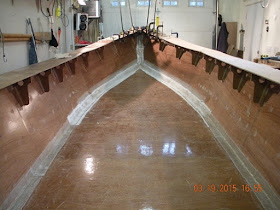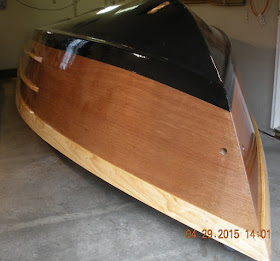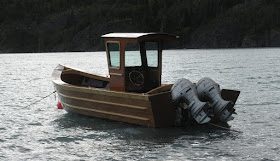Originally I planned to lay cheap outdoor carpet on the boat
deck without fastening or gluing the carpet to the deck. But trailering caused
the carpet to twist into a trip hazard nightmare so I decided to glue the
carpet down.
After hearing lots of good things about Loctite PL
construction adhesive, I decided to try the PL375 for gluing the outdoor carpet
to the boat deck.
I was a little concerned about the warning on the label “Not
Recommended For Underwater applications.” I wasn’t sure if that warning meant “don’t
don your scuba gear and dive in with your caulk gun and try to glue two submerged
pieces together,” or, “after gluing two pieces together in the dry, do not let
them get wet.” Either way, it doesn’t sound good for boating.
I checked the other PL products and they all had a similar
warning.
PL 3x and 8x - “Not Recommended For Water submersion applications.”
PL
200 - “Not Recommended For Underwater applications or permanent water immersion.”
The stuff worked great for most of the summer while we
picked only sunny days for boating and the only water inside the boat was a few
drops off of our boots during beach launchings. I was impressed that it held
while trailering and the swirling wind inside the boat did not break the carpet
loose. Then we had our first rainy trip.
The boat hung offshore on the hook for two days in what felt
like Georgia rain. Just looking at the boat from shore it was obvious she was becoming
a large bird bath. When it was time to leave, I paddled the kayak out and
climbed into the boat. In the aft corner where the water ponded up to 4 inches
deep, the carpet was floating. The PL not only disbonded from the carpet but it
also disbonded from the deck and there were pieces of PL free floating in the puddle. Outside of the puddle the carpet was still bonded to the deck.
 |
| Disbonded carpet with pieces of PL375 laying loose |
My plan was to remove the carpet at the end of boating season and re-install it next season. When the PL was working fine (in the dry), I was starting to worry that I
may not be able to get the carpet out. I wondered
if I might have to rip up and destroy the carpet then sand PL off of the deck.
Well, the warning on the Loctite PL label was honest and now
I know that a little water will free the carpet unharmed and float the PL off of
the deck.
























































